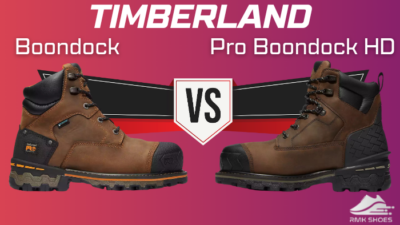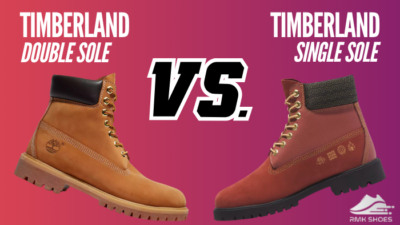When it comes to athletic shoes, the market is flooded with options from various brands.
As a result, choosing the right pair for daily wear can be overwhelming, especially when you’re picking from two popular brands: Brooks and On Cloud.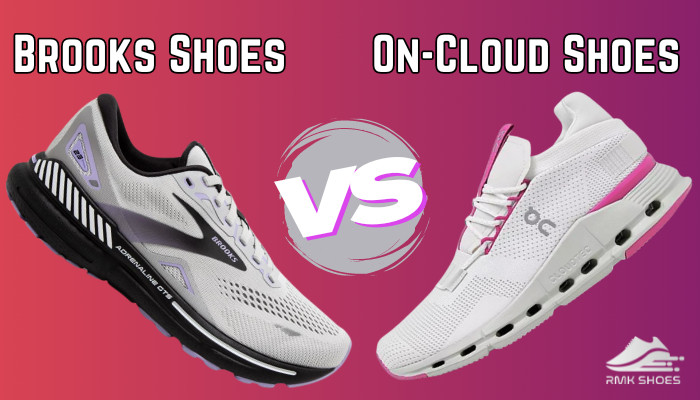
Both brands offer excellent shoes with unique features, but which one is better suited for you?
In this article, we’ll compare the Brooks and On Cloud shoes to help you make an informed purchase decision.
A Quick Rundown of the On Cloud and Brooks Shoes
Both Brooks and On Cloud(the company’s name is ON) shoes are popular choices among runners who value comfort, performance, and durability.
While they offer different cushioning technologies and target slightly different running styles, both brands aim to provide a smooth and enjoyable running experience.
They also have years of experience in the footwear industry and offer various types of shoes for the athletic crowd.
From beginners to seasoned athletes, Brooks has been catering to a wide range of runners with their high-quality performance shoes. These shoes offer a variety of cushioning levels to suit different running styles and user preferences.
Some popular Brooks models include the Ghost, Adrenaline, Glycerin, and Launch.
Meanwhile, despite being a newer brand than Brooks, On has quickly gained popularity due to its unique design and comfortable build quality.
The Cloudventure, Cloud 5, Cloudstratus, and Cloudflow are some of the most popular On Cloud models available in the market right now.
Feature Comparison between On Cloud and Brooks Shoes
As both brands have a distinct focus on the footwear market, the technical features of their shoes differ quite a lot, and that’s a good thing. These different attributes between the shoes help both brands to cover a wider audience and purpose in a meaningful way.
Let’s do a side-by-side technical comparison between the On Cloud and Brooks shoes to get a better understanding.
| Attributes | On Cloud Shoes | Brooks Shoes |
|---|---|---|
| Types of shoes | Running, Walking, Lifestyle | Running, Walking, Trail, Racing, Gym |
| Purpose | Comfort, Cushioning, Performance | Cushioning, Support, Stability, Performance |
| Overall weight | Lighter | Moderate to heavy, depending on the model |
| Sizing | True to size with some exceptions | True to size with some exceptions |
| Commonly used upper material | Mesh, Engineered Fabrics | Knit, Mesh, Engineered Fabrics |
| Midsole | CloudTec pods (EVA foam with air channels) | DNA Loft foam, BioMoGo DNA, DNA Flash (depending on model) |
| Cushioning | Firmer feel | Plush to minimal |
| Outsole | Rubber with CloudTec pods | Rubber with varying traction patterns |
| Heel drop | Around 5 to 8mm | Around 4 to 12mm |
| Breathability | Excellent | Good |
| Color options | Fewer muted colorways | A wider variety of colorways with more poppy colors |
| Price range | $100-330 | $70-250 |
| Ideal use | Road running, fast-paced tempo runs, daily training, jogging | High-performance running, marathon, gym training, standing all day, walking |
On a side note, check out the differences between the Nobull and On Cloud shoes.
Primary Differences between Brooks and On Cloud Shoes
Over the past few years, I have used several shoes from both brands as my daily driver.
After doing several hikes and daily training sessions, I have noticed quite a few underlying differences between each brand’s offerings that set them apart in a unique way.
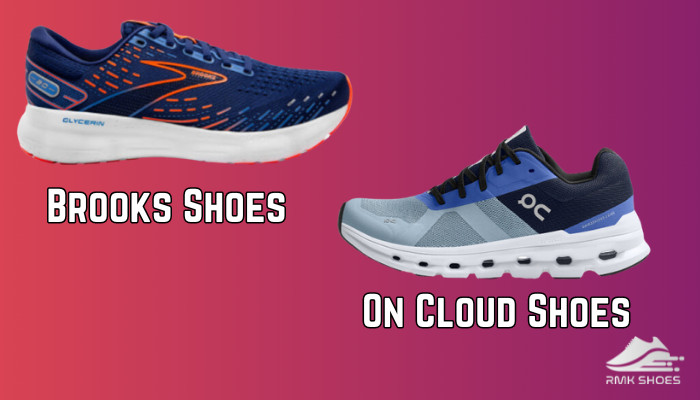
The best way to compare two brands is to generalize the common characteristics of their shoes and put them side by side to see which one comes on top. We’re going to do precisely that in this comparison.
So, let’s see how the On Cloud shoes differ from the Brooks footwear.
1. Product Offering
Brooks has a different focus on the market compared to On-Running, which is also reflected in their corresponding products. Each brand has various categories of shoes to target different audiences.
For example, On primarily offers running shoes, with a few hiking and lifestyle options.
Meanwhile, Brooks provides an extensive range of running shoes, including gym training, marathon racing, and walking options.
And that’s not all!
They also have different footwear models based on the type of user experience the shoes offer.
On-Cloud Shoes:
| Categories | Models |
|---|---|
| Road-running shoes | Cloudmonster, Cloud X3, Cloudeclipse, Cloudflow, Cloudstratus, Cloudsurfer, Cloudflyer, Cloudswift, Cloudgo, Cloudrunner, Cloudneo, Cloudboom |
| Hiking and trail running shoes | Cloudrock, Cloudwander, Cloudventure Peak, Cloudalpine, Cloudvista, Cloudhero, Cloudtrax |
| Lifestyle shoes | Cloudnova, Cloud 5, Cloudtilt, Cloudroam, Cloudrift, Cloudaway, Cloudeasy, Cloud Play, Cloud Sky, The Roger, Cloud Terry, Cloud Hi |
| Tennis shoes | The Roger Pro |
| Track & field shoes | Cloudspike |
Brooks Shoes:
| Categories | Models |
|---|---|
| Road-running and walking shoes | Glycerine, Ghost, Adrenaline, Hyperion, Beast, Levitate, Revel, Addiction |
| Treadmill & gym shoes | Ariel GTS, Glycerine Stealthfit, Trace, Launch, Dyad, Anthem |
| Support shoes | Adrenaline GTS, Glycerine GTS, Glycerin StealthFit GTS, Beast GTS, Addiction Walker, Launch GTS, Beast 20 |
| Trail and hiking shoes | Caldera, Catamount, Cascadia, Divide, |
| Foot condition | Ghost Max, Glycerine GTS, Addiction Walker, Adrenaline GTS |
| Track and Spikes | Hyperion Elite, Draft XC, ELMN8, Wire, QW-K, Hyperion Tempo |
| Speed | Launch GTS, Hyperion Max |
Some of these shoes also have waterproof and vegan-friendly variants.
2. Design and Aesthetic
The shoes from Brooks and On-Cloud look vastly different from each other. You’ll never mistake a Brooks shoe for On-Cloud or vice-versa, and that’s a good thing.
One of the main reasons why I bought the On-Cloud shoes is the overall design language of these kicks.
At a glance, the grid-patterned sole design of these shoes can be recognized from far away.
On-Cloud refers to this design as CloudTec®, which features small, hollow pods on the shoe’s outsole for a propulsive ride. These undeniably unique pods instantly become the centerpiece of the design and resemble alien bubbles trapped in the midsole of these shoes.
Hence the cloud-like shape and the naming of these shoes.
Furthermore, these shoes also embrace muted, pastel-like colorways with a sense of fashionably modern aesthetics. The On-Cloud running shoes are a godsend for fashion-forward athletes.
Switching over to the Brooks shoes, they look like any other performance-driven footwear.
These shoes radiate a classic, athletic vibe that prioritizes functionality over flashy design. The clean lines and subtle pop of colors deliver a sleek and streamlined look that many athletes have come to love.
And why wouldn’t they?
Brooks shoes draw inspiration from the iconic running shoe silhouettes from the past, often evoking a sense of tradition among runners. There are also many colorways to choose from for any Brooks footwear.
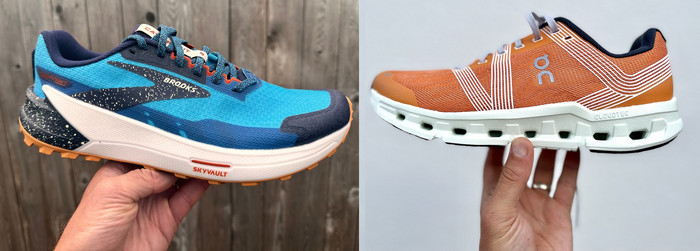
Not to mention, these colorways aren’t as muted as the Cloud shoes.
3. Upper Construction
From the overall build quality to the material technology, there are many differences between the shoes from both brands.
Let me explain!
Material Quality
Engineered mesh is the go-to upper material for the majority of Brooks shoes.
Such a material offers a nice balance of breathability, flexibility, and structure. Some high-end variants also have reinforced overlays for added durability and support.
As a result, you can expect a secure and comfortable fit with any of the latest Brooks shoes, like the Ghost 15, which has a durable yet flexible upper that molds around your feet for a personalized fit.
However, the structure of these shoes can feel slightly bulkier for everyday use compared to the On-Cloud runners.
Speaking of, the On-Cloud shoes also feature a mesh upper. But they utilize their proprietary CloudFlow fabric, which is well-known for its feather-like lightweight feel, unmatched breathability, and seamless construction.
This conforming fit of the CloudFlow material comes at the cost of less support, especially when we compare it with Brooks’ offerings.
Tongue
The traditionally constructed tongue of the Brooks shoes has varying levels of padding based on the model.
Some models offer low-profile tongues with moderate padding, like the Brooks Hyperion Max, while others have plush padding for comfort and pressure relief, like the Brooks Glycerine GTS 21.
On the other hand, most of the On-Cloud shoes have a gusseted or bootie-like tongue with a medium profile.
Some shoes even have minimal tongue construction for a streamlined feel.
Nonetheless, the padding of these tongues creates a sock-like fit for maximum comfort without creating a constricting feel.
4. Midsole and Comfort
The Brooks shoes can be described as a plush playground of options. Their midsoles feel like a luxurious marshmallow that engulfs your feet yet offers excellent bounce for any activity.
Most of these shoes, like Ghost 15, incorporate their in-house DNA Loft midsole foam, a nitrogen-infused marvel. It delivers both pillowy softness and surprising responsiveness.
Hence, you can run for miles without experiencing any foot fatigue.
Brooks also offers different midsole technology, like the BioMoGo DNA found in racing shoes, like Brooks Launch 10. It injects snappy energy return and a firmer feel for fast-paced running.
They also infuse their GuideRail technology in their support shoes, like the Brooks Adrenaline GTS, to promote natural stride and mild support for overpronators.
In the meantime, the On-Cloud shoes take an unconventional approach in their midsole construction.
Instead of a simplified foam layer on top of the outsole, On-Cloud has opted for a constellation of hollow pods called CloudTec. These are made from Helion or Zero-Gravity(modified EVA) foam that is both comfortable and responsive.
These pods compress and rebound with each step to create a unique sensation and comfort.
Like dancing on a bed of clouds, each footfall triggers a soft and bouncy response during walking or running sessions.
But don’t mistake the softness for lack of support!
A hidden plastic plate called Speedboard, nestled within some On-Cloud models, adds a touch of rigidity for a propulsive feel, perfect for tempo runs or race day.
The Cloudboom Echo is such a shoe that boasts this technology.
While On Cloud may not be the king of plushness and support like Brooks, the CloudTec pods offer surprising shock absorption, making them a comfortable choice for long distances.
5. Outsole and Durability
Brooks and On-Cloud did an amazing job with the outsole implementation of their shoes. Both brands deliver excellent grip and longevity, but in a different way.
Brooks utilizes traditional rubber outsole in all of their shoes. However, the traction pattern varies depending on the model and its intended use.
For example, road shoes, like Brooks Beast, have smooth treads for pavement.
On the other hand, trail running shoes, like Brooks Caldera, feature aggressive lugs to enhance grip on technical terrain.
These rubber outsoles have good construction and abrasion resistance, making them suitable for high-mileage running.
Meanwhile, the On-Cloud shoes have strategically placed rubber on the forefoot and heel area to add an extra layer of grip and durability.
Unlike Brooks, it has much less rubber as the hollow puds serve the outsole purpose.
On-Cloud shoes also feature a midfoot break in the outsole that extends from midfoot to the heel. Such a feature enhances the overall breathability of these shoes.
However, I have often noticed small rocks getting wedged into this break, which is quite annoying.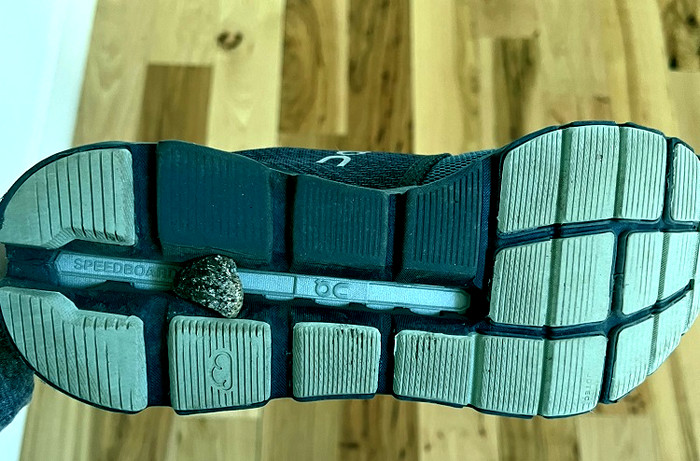
Similar to Brooks, you can expect around 400-500 miles of longevity from these On-Cloud shoes.
But, the exposed cloud pods can be susceptible to wear and tear, especially on rough terrain.
6. Weight Balance
Most Brooks shoes have a more evenly distributed weight across their construction. As a result, these runners are much more versatile for various workouts than the Cloud kicks.
Whether you prefer a heel strike running style or a midfoot strike walking, these shoes will promote natural movement throughout the entire session.
Conversely, the On-Cloud shoes focus the majority of the weight in the rearfoot and midfoot area, allowing a natural gait cycle and maximum stride length while running.
7. Overall Fit and Sizing
Having a perfect fit is really important if you want the best footwear experience.
Both brands generally offer true-to-size fit in their shoes, along with half-size options to accommodate any foot shape.
However, there are some differences in the overall build of these shoes.
For starters, the On-Cloud shoes(like the Cloud 5) tend to have slightly narrower midfoot and heel areas than the Brooks runners(like the Ghost 15).
It’s a snug yet non-constricting fit, but people with wider foot shapes might not prefer such a build. For those, the Brooks shoes should serve better.
The On-Cloud shoes also come in the typical street shoe size, while the Brooks shoes are slightly shorter in length, about half a size smaller.
So, you can resolve this issue by going half a size up.
And there’s even more!
Collar
The most notable difference between the collars of these shoes is the variety of heights.
Most On-Cloud shoes have a low-profile collar with adequate padding for ankle support. It gives a more open feel around the ankle, giving you more freedom of movement.
Meanwhile, Brooks prioritizes comfort and snugness in the midfoot area. So they offer a range of collar heights, from low-cut for a more barefoot feel to mid-cut for added ankle support.
Lacing
The majority of the Brooks models have a traditional lace-up system with 5 to 6 reinforced eyelets design. It not only gives a more conventional feel but also offers customizability for a secure and personalized fit.
That said, the manual adjusting is a bit tiresome and can come undone if it is not tied properly.
The On-Cloud shoes, on the other hand, take things to a whole new level by offering four distinct lace-up systems, each with its unique advantages or disadvantages.
- Speed lacing: Found on the high-end Cloud shoes, like Cloud 5 models. It has elasticated laces that you don’t need to tie. Just pull on the knot to tighten and fold it in. But you’ll need to end up tying the knots on both ends if you want a tighter fit.
- Standard lacing: Classic lace-up system with traditional laces and eyelets. Can be found on Cloud X and Cloudflow.
- Hook and loop fastener: These are secure power straps that you can press together to close or pull apart to open. Available in Cloud 5 Terry.
- Star lacing: Star-crossed lacing provides an extra secure fit in the midfoot for fast-paced running. Can be found on Cloudstratus, Cloudflyer, and Cloud X 3 Shift.
Some On-Cloud shoes even have a quick slip-on design to bypass the hassle of lacing completely.
Sizing Chart
Despite both brands offering true-to-size shoes, they have entirely different sizing and measurement charts.
If you’re shopping for either of these shoes, you need to get familiar with both charts as you can’t rely on On-Cloud’s sizing to pick a Brooks shoe or vice-versa.
Brooks Shoes Sizing Chart for Men
| US Sizes | European Sizes | UK Sizes | Centimeters |
|---|---|---|---|
| 7 | 40 | 6.5 | 25 |
| 7.5 | 40.5 | 7 | 25.5 |
| 8 | 41 | 7.5 | 26 |
| 8.5 | 42 | 8 | 26.5 |
| 9 | 42.5 | 8.5 | 27 |
| 9.5 | 43 | 9 | 27.5 |
| 10 | 44 | 9.5 | 28 |
| 10.5 | 44.5 | 10 | 28.5 |
| 11 | 45 | 10.5 | 29 |
| 11.5 | 45.5 | 11 | 29.5 |
| 12 | 46 | 11.5 | 30 |
| 12.5 | 46.5 | 12 | 30.5 |
| 13 | 47.5 | 12.5 | 31 |
| 14 | 48.5 | 13.5 | 32 |
| 15 | 49.5 | 14.5 | 33 |
Brooks Shoes Sizing Chart for Women
| US Sizes | European Sizes | UK Sizes | Centimeters |
|---|---|---|---|
| 5 | 35.5 | 3 | 22.5 |
| 5.5 | 36 | 3.5 | 23 |
| 6 | 36.5 | 4 | 23.5 |
| 6.5 | 37.5 | 4.5 | 24 |
| 7 | 38 | 5 | 24.5 |
| 7.5 | 38.5 | 5.5 | 25 |
| 8 | 39 | 6 | 25.5 |
| 8.5 | 40 | 6.5 | 26 |
| 9 | 40.5 | 7 | 26.5 |
| 9.5 | 41 | 7.5 | 27 |
| 10 | 42 | 8 | 27.5 |
| 10.5 | 42.5 | 8.5 | 28 |
| 11 | 43 | 9 | 28.5 |
On-Cloud Shoes Sizing Chart for Men and Women
| US Sizes (Men's) | US Sizes (Women's) | European Sizes | UK Sizes | Centimeters |
|---|---|---|---|---|
| 7 | 8.5 | 40 | 6.5 | 25 |
| 7.5 | 9 | 40.5 | 7 | 25.5 |
| 8 | 9.5 | 41 | 7.5 | 26 |
| 8.5 | 10 | 42 | 8 | 26.5 |
| 9 | 10.5 | 42.5 | 8.5 | 27 |
| 9.5 | 11 | 43 | 9 | 27.5 |
| 10 | 11.5 | 44 | 9.5 | 28 |
| 10.5 | 12 | 44.5 | 10 | 28.5 |
| 11 | - | 45 | 10.5 | 29 |
| 11.5 | - | 45.5 | 11 | 29.5 |
| 12 | - | 46 | 11.5 | 30 |
| 12.5 | - | 47 | 12 | 30.5 |
| 13 | - | 47.5 | 12.5 | 31 |
| 14 | - | 48.5 | 13.5 | 32 |
| 15 | - | 49.5 | 14.5 | 33 |
Furthermore, you can select Narrow, Medium, Wide, or Extra-wide options for Brooks shoes according to your foot size.
Such options are sorely missing for On-Cloud kicks.
If you want to know more about these runners, check out the differences between New Balance and On-Cloud shoes.
8. Toe Box and Heel Drop
Brooks runners generally feature wider toe boxes to accommodate any foot shape and allow natural toe splay. These shoes also have a high-profile toe cap to provide a roomier feel and enough space for toe wiggling.
Not to mention, these wider profiles prevent any risk of bunions or blistering.
Compared to the toe box of the medium-width Brooks shoes, the On-Cloud runners feature a slightly narrower build.
Despite having a narrower toe cap, the On-Cloud shoes don’t really feel constrictive as the upper material is very comfortable. But this snug fit may not be ideal for wider forefoot shapes.
I’d suggest going for a half size up if you prefer ample toe space in your On running shoe.
The same can be seen in the heel counter of these shoes.
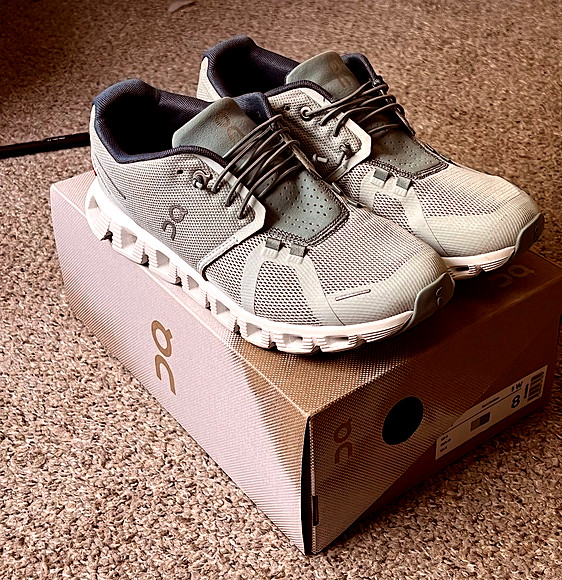
Speaking of heels, the Brooks shoes offer a wider range of heel drops across different categories. You can choose from a low(4mm) to high(12mm) offset based on your running style and needs.
Meanwhile, most On-Cloud models have evenly measured heel drops with a smaller range(5-8mm) than Brooks. This makes the On-Cloud runners suitable for technical trails or speedwork, especially when a midfoot strike is needed.
But for heel strike running styles, the higher heel drop of the Brooks shoes is more suitable.
| Feature | Brooks | On-Cloud |
|---|---|---|
| Toe Box | Generally wider | Narrower |
| Heel Drop | Wide range (4mm-12mm) | Smaller range (4-8mm) |
9. Running and Daily Training Performance
Since each brand caters to different running styles and preferences, choosing the right one for you is no easy feat.
The Brooks shoes offer a wider spectrum of cushioning to cover various running aspects.
From the plushy midsole of the Ghost models to the responsive cushioning of the Launch shoes, Brooks has something to offer for every runner.
Their DNA Loft midsole also excels in stability and responsiveness, making them ideal for indoor or outdoor workouts.
You also get the option to pick a dedicated weight-lifting and squatting shoe like the Brooks Beast.
I got a much more pleasant running experience with my Ghost 15 during my half marathon runs due to its soft and bouncy build. This shoe didn’t bulge even on rougher terrain, which can not be said for my Cloud 5.
For a natural gait cycle, the Brooks runners serve much better than the On-runners.
However, Brooks felt a bit firmer during high-impact activities, like tempo running or box jumping.
For those, the highly propulsive CloudTec pods of the On-Cloud shoe offered a better training experience. Such a characteristic also fares well for fast-paced running or casual jogging.
These shoes usually focus on a natural feel, so they lack the extended support and stability we can find in the Brooks shoes.
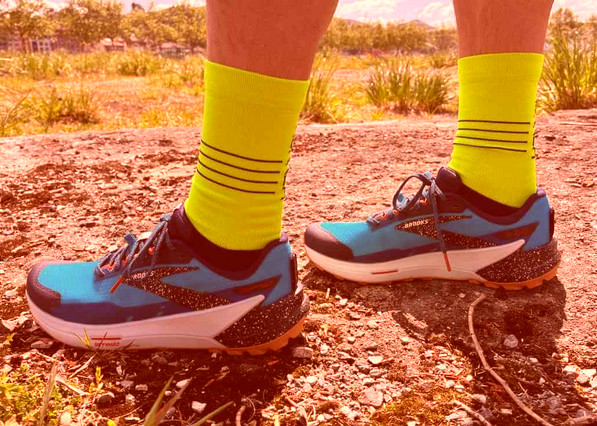
A few On-Cloud models, like the Cloudflow, still offer enhanced stability for mild overpronators.
But the Brooks shoes take the lead in support and stability as they have a more stable and wider platform, along with their proprietary GuideRail technology.
They also offer a versatile stack height depending on the model and its intended purpose. Most On-Cloud shoes usually have a higher stack height and less supportive heel counter.
Additionally, On-Cloud shoes tend to be much lighter than the Brooks due to their lightweight midsole and upper construction.
As a result, the Brooks feel a bit bulky and heavier for recovery runs after trying out the On-Cloud shoes.
| Traits | Brooks Shoes | On-Cloud Shoes |
|---|---|---|
| Stack height | Low to moderate, depending on the model | Moderate for the majority of the shoes, with some exceptions |
| Weight | Higher(around 270g for men’s shoes) | Lower(around 230g for men’s shoes) |
| Heel counter | External | Internal |
Both brands have reinforced toe puffs in their shoes to protect your toes from debris while running on gravel.
That being said, the durable outsole construction of the Brooks runners makes them appropriate for running or hiking on challenging terrains.
10. Walking and Standing All Day
The cushioning of a shoe is the most important aspect when it comes to conquering long walks or enduring long hours on your feet.
Certain professions, like nursing, might require you to stand and walk all day without any rest.
The Brooks shoes that feature the softer and springy DNA Loft V2 midsole are a better choice for such professions than the firmer midsole of the On-Cloud kicks.
That being said, the lightweight feel and the bouncy build of the latter shoes provided a soothing experience for my daily jogging.
The On-Cloud runners are also great for slower walks or lifestyle wear, as these shoes have excellent breathability and a comfortable upper.
Not to mention, the higher heel-drop and stack height(on average) of On-Clouds promote neutral stride, as well as moderate comfort.
Nonetheless, you can’t go wrong with either brand if you’re buying these shoes for casual use.
11. Pricing and Value Proposition
The starting price for On-Cloud shoes is generally much higher than the Brooks footwear. The same goes for their highest-value offerings as well.
So the On-Cloud shoes are comparatively more expensive than Brooks, right?
Well, not exactly.
If we compare some of the most popular ON-running shoes with the respective models from Brooks, we can see that the Brooks shoes have the same price tag as the On-Cloud shoes, sometimes even higher.
For example, the Cloud 5 and the Ghost 15 both have a $140 price tag.
Since the Brooks shoe offered a noticeably better running performance, it has a better value proposition compared to the Cloud 5 despite having a similar price tag.
However, the price-to-value ratio can change depending on which model you are comparing.
Pros and Cons of the Brooks and On Cloud Shoes
Going through the differences between the shoes from two completely different brands may not emphasize the unique advantages and disadvantages that each brand brings to the table.
So, let’s take a look at the pros and cons of the Brook and On Cloud shoes before we move on to the verdict.
Brooks
- »Excellent cushioning and comfort for running or training sessions.
- »Soft yet responsive midsole.
- »Adequate support and stability.
- »More durable construction.
- »Wider variety of models to suit different preferences and running styles.
- »Slightly heavier.
- »Some models offer less breathability than the competition.
On Cloud
- »More unique feel due to the sole construction.
- »Lightweight and responsive midsole.
- »More plush cushioning.
- »Excellent breathability.
- »More modern and stylish design.
- »Less support and stability.
- »Less durable construction.
- »Higher price tag.
On a similar note, check out the differences between On-Cloud and ASICS shoes.
Verdict: Brooks Vs On Cloud
From individual aspects, both Brooks and On-Cloud shoes shine in distinct ways. When we judge the overall products from both brands from a wider perspective, the Brooks shoes come on top due to providing a better user experience.
The ON-Cloud shoes are definitely better choices for stylistic purposes and everyday wear.
However, the overall better running and training performance, along with a more affordable price tag, increase the appeal of Brooks shoes.
Regardless, you should always try on these shoes before making any purchase decision.
Frequently Asked Questions
Are Brooks shoes better than On Cloud?
It depends on your foot physique and preference whether the Brooks or On Cloud is better for you. For example, if you have narrow feet and want a responsive ride, the On Cloud shoes are more suitable than the Brooks footwear.
What brand is comparable to Brooks?
The footwear from Nike, ASICS, Fila, Saucony, New Balance, etc, are comparable to the Brooks as they offer shoes in similar categories.
Do podiatrists recommend Brooks?
Yes. Many podiatrists have recommended Brooks shoes for gym or casual use as these kicks promote natural foot strikes and reduce foot fatigue.
Which one is better for nurses, Brooks or On-Cloud?
Brooks shoes are better for nurses as they have excellent midfoot support and comfortable, plush cushioning.
Are On-Cloud shoes the same as HOKA runners?
No. On-running shoes are distinctly dissimilar to HOKA footwear in several aspects. Despite both brands catering to similar crowds, the overall design, cushioning, and user experience are quite different between their shoes.

